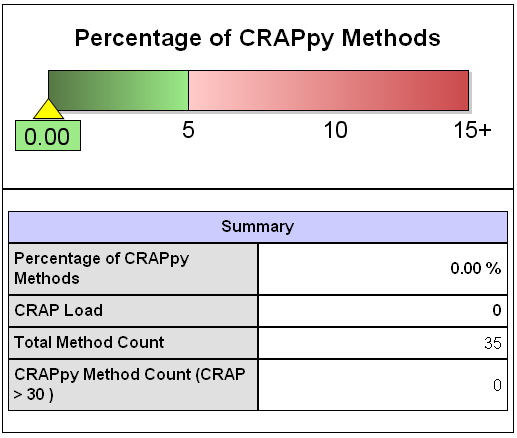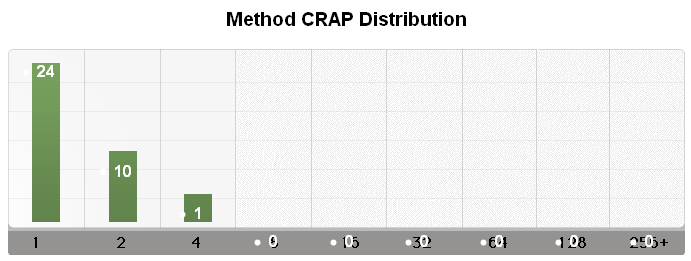I had some problems to search for all necessary details so I am going to publish my little script here as it might be useful for somebody.
In my work I need to keep several console windows open (on Windows) in order to produce jar artefacts from several dependent projects without a need to use our build server. Sometimes it got a bit out of control when I needed 6 or 8 of them opened at the same time and was not easy to find partcular one quickly. So I have decided to create a script that changes console title to working directory (only last directory).ti.bat:
@echo off setlocal set name=%cd% set name=%name:*\=% set name=%name:*\=% set name=%name:*\=% set name=%name:*\=% set name=%name:*\=% set name=%name:*\=% set name=%name:*\=% set name=%name:*\=% set name=%name:*\=% set name=%name:*\=% title=%name% endlocalExplanation of non-obvious things follows:
set name=%cd%gets name of working directory.- following collection of lines is my workaround for a loop that did not work for me well. If you can help me to get rid of this duplication (and limit to 10 subdirectories) I will be very glad.
set name=%name:*\=%removes text from variable up to the first backslash or it does nothing if there is no backlash.-
setlocal, endlocalkeep changes in variables private for script execution, changes are forgotten when it ends.
ti [ENTER] and the title is nicely renamed from original not very useful C:\WINDOWS\system32\cmd.exe to something like dao_testing.
Recent blog of Uncle Bob got me curious about the new metric he mentioned there: Change Risk Analysis and Predictions - in short - CRAP.
It is based on putting together cyclomatic complexity of code and its coverage by unit tests. While the increase of the first represents worsening of code base that leads to the bugs, the increase of second one helps fighting code rot by allowing refactoring and showing bugs when they occur. In theory, of course, your mileage might vary. In my opinion they are good candidates to put into one combined metrics because for example code coverage alone does not say much. Let's say we have 80% coverage. It does not say if last 20% does not need tests because it is too simple to break or just too hard to test. But when complexity raises value of metric and code coverage lowers it, then with correct threshold it can point nicely to places that deserve your attention. So I was interested to see how results of my recent work will stand this test. It took me some time to make crap4j running correctly, because there is some problem with inner classes in test classes and the only way to set up CRAP4J_HOME that worked for me was to modify ANT_OPTS. I was quite delighted by seeing 0% of CRAP in several of small modules I have tried it on. Unfortunately I did not have time to try it with older and bigger modules (not to mention results would be polluted by code of others and I wanted to see my results to give a boost to my ego ;-) ). I might do that later, but I will not publish any results here. Here are some screenshots:
 In my opinion it is very nice metric, with fantastic name (it was the name that caught my attention). I can imagine it is the name that can create interesting peer pressure if applied in the team. On the other hand, I cannot imagine worse name from manager's point of view. Which manager would like to see report with such a juicy name on his desk showing him how poorly his subordinates work :-) Which manager would not be afraid to show it to his superiors/peers?
In my opinion it is very nice metric, with fantastic name (it was the name that caught my attention). I can imagine it is the name that can create interesting peer pressure if applied in the team. On the other hand, I cannot imagine worse name from manager's point of view. Which manager would like to see report with such a juicy name on his desk showing him how poorly his subordinates work :-) Which manager would not be afraid to show it to his superiors/peers?
Today I heard interesting thing. Our deadline for committing to plan for next year was moved to later, some time in the middle of June instead of being as planned. "I hope it will help us to get better estimates" we were told (this was my interpretation, the original was probably a bit different).
I was quiet as I would not be able to change that decision in any way. Still I wonder how giving us 2 or 3 weeks more will improve our ability to estimate 12 following months. Why management feels better to guess what 20 people can do in 12 months than estimating only 1-2 months, performing planned tasks and then checking where we got. But that is not the reason for this post. It reminded me important information I have found in Implementing Lean Software Development: From Concept to Cash some time ago.Goldratt believes that the key constraint of projects - he considers the product development to be a project - is created when estimates are regarded as commitments. [...] Since the estimate will be regarded as a commitment, the estimator accommodates by including a large amount of a "safety" in case things go wrong. However, even if things go well, the estimated time will be used up anyway, since estimators don't want to look like they over-estimated.and bit later in the same chapter:
In fact, if half of the activities don't take longer than their estimated time, the system will not achieve the desired improvement.This is that important bit of information - when all tasks are achieved in estimated time we cannot be sure we did not waste time. But when some of them (ideally 50%) take longer than estimated time then one of the possible reasons could be that our estimates are very close to minimal time needed, thus waste is minimized.
A few hours ago I have signed http://manifesto.softwarecraftsmanship.org/. Looking back at it I really do not understand why it took me whole day to decide so - it is no-brainer for anybody who takes his work seriously.
I am the 978th. There are 1012 signers at this moment and growing faster than I can check it is still valid number.I "forced" my brother to buy Programming in Scala in December and I got a chance to quickly read a few chapters. It is really interesting language, strange syntax is well compensated with strong features it has. So I have decided to buy one too.
I have started to read it from scratch recently, doing examples and experimenting as readers are supposed to. While doing my experiments I needed to use scaladoc documentation. When I have found method I was looking for, it was a bit shock for me - How am I supposed to read that? And I know what 'transform' should do." Let's see an example fromMap:
def transform[C](f : (A, B) => C) : Map[A, C]So I did a few experiments until interpreter accepted my input, then a few more and I know how to read it now :-)
var x = Map(1->"A", 2->"B")
x.transform((k,v) => v*2)
//-> Map(1 -> AA, 2 -> BB)
x.transform((k,v) => v.isEmpty)
//-> Map(1 -> false, 2 -> false)
So, now I understand that method transform takes function with parameters A and B (meaning key and value pair) and transforming it to C. Result C is taken and as result of transform new Map A->C is returned. A is not modified, so it is not specified in transform[C] I guess.
I can see there will be a few more surprises along the way, but if solving all of them feels as good as cracking this little problem, then I will have enjoyable experience in learning Scala.
Note: I decided to give Scala a try after my discussions about it with Peter Misak.
